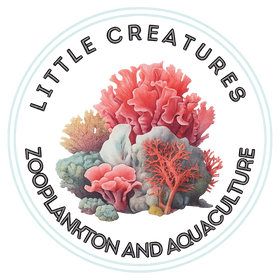Why Live Phytoplankton Still Rules Aquaculture Feeding
(and where concentrates like Phyto Concrete Nanno Blast fit in)
In marine hatcheries, reef aquariums, and aquaculture systems, the choice between live phytoplankton and processed alternatives can make or break your results. While concentrated feeds like Phyto Concrete Nanno Blast are gaining popularity for their convenience and shelf stability, live phytoplankton remains the most reliable foundation for healthy zooplankton cultures.
---
The Case for Concentrates and Powders
Products such as phytoplankton powders, pastes, and concentrates bring serious advantages to the table:
Extended Shelf Life – Refrigerated concentrates can last for months, making them perfect for backup feeding or remote facilities.
High Density Nutrition – A small dose delivers a big nutritional hit, ideal for when you need to boost feed levels quickly.
Cost-Efficient Transport – Lighter, smaller packaging reduces shipping costs and environmental impact.
Shipping Resilience – Unlike live microalgae, they can handle warmer transit conditions and shipping delays.
For rotifer production, copepod culture, or emergency backup feeding, a concentrated nannochloropsis product can be a valuable tool.
---
The Drawbacks You Can’t Ignore
The same traits that make processed phytoplankton easy to store can also make them tricky to use. Unlike live microalgae, they do not actively consume ammonia or stabilise water chemistry. This means they can cause rapid water fouling if overused.
With live phytoplankton, you can heavily tint the water for rotifers, artemia, or copepods without major risk. With powders or concentrates, you must lightly tint only, or you risk triggering bacterial blooms, oxygen depletion, and culture crashes. Inexperienced dosing is the most common cause of losses when using processed feeds.
---
Why Live Phyto is Still the Gold Standard
Live phytoplankton, whether nannochloropsis, tetraselmis, or isochrysis, isn’t just feed—it’s a living water conditioner. It absorbs excess nutrients, helps maintain oxygen levels, and supports stable, clean culture conditions.
This makes it:
More forgiving for beginners
Safer for continuous heavy feeding
Better at maintaining culture stability over time
Live phyto is the closest thing to a “self-cleaning” feed you can get.
---
A Balanced Feeding Strategy
The smartest aquaculture operators use a hybrid approach: live phytoplankton for daily stability, backed up with a high-quality concentrate like Phyto Concrete Nanno Blast for convenience, peak demand periods, or as insurance against supply interruptions.
By understanding when to use each type, you can:
Maximise yield from rotifer and copepod cultures
Maintain cleaner, more stable systems
Protect against unexpected feed shortages
---
Bottom line: In aquaculture, live phytoplankton still wears the crown—but having a concentrated phyto product on hand ensures you’re ready for anything.

